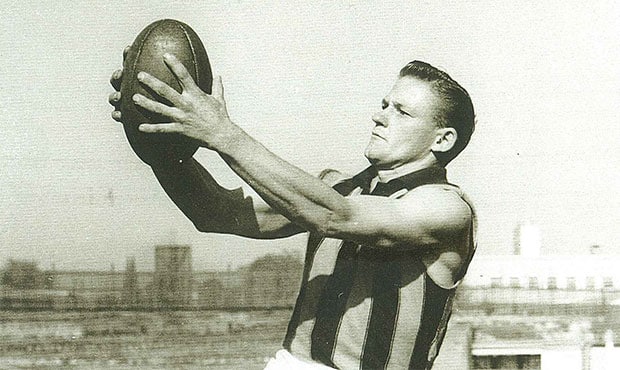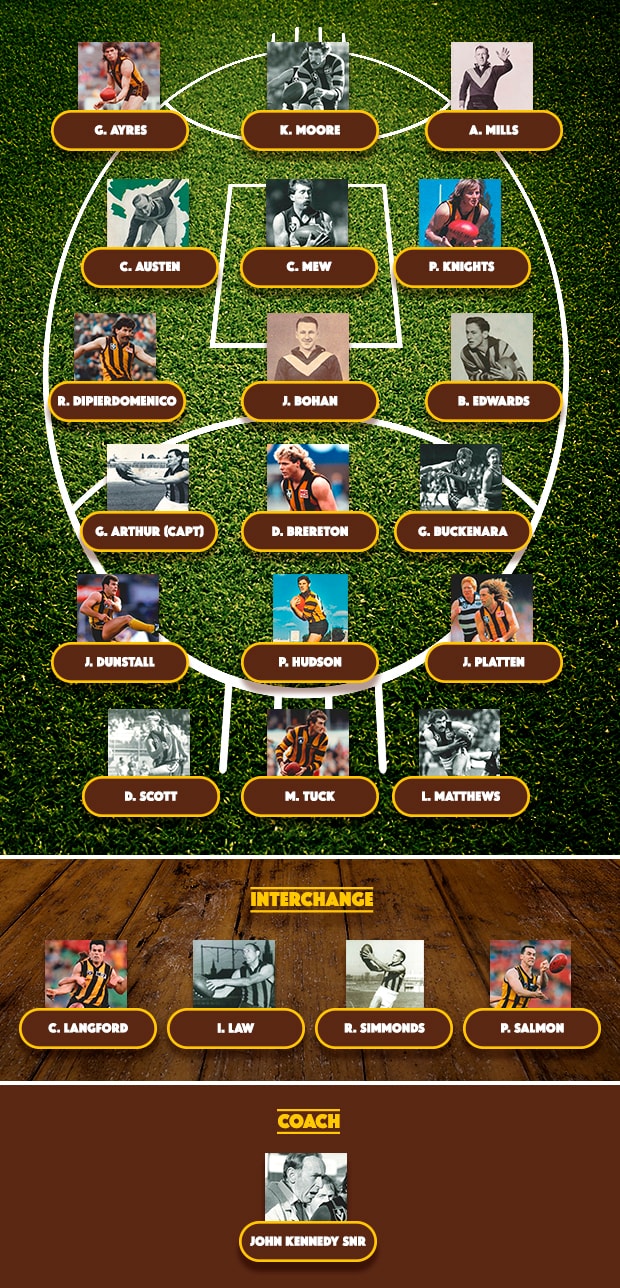
LEIGH MATTHEWS
No. 3
Position: Rover
Career: 1969-85
Games: 332. Goals: 915
Captain: 1981-85
Premierships: 1971, 76, 78, 83. Night premierships: 1969, 77. Finals appearances: 29.
Awards: 14-time interstate representative; six-time leading goalkicker; 1971, 72, 74, 76, 77, 78, 80, 82 Club Champion.
Nicknamed ‘Lethal’ in his career because of his absolute lack of fear as well as his goal scoring ability. Built like a tank, he was an unusual physique for a rover but became something of a pocket dynamo with excellent judgement and anticipation. Towards the end of his playing career he shifted to the forward line with telling effect, with his 915 goals placing him fourth on the VFL’s all-time goalkicking list. His calibre as a player is demonstrated by his eight Club Champion awards received at a time when Hawthorn was a powerful team boasting some of the competition’s greatest players.
Matthews went on to enjoy further success off-field, coaching Collingwood to a flag in 1990. After leaving his coaching position he won acclaim as a television commentator before being coaxed back to the coach’s box again, this time with the Brisbane Lions winning three premierships in 2001, 2002 and 2003.
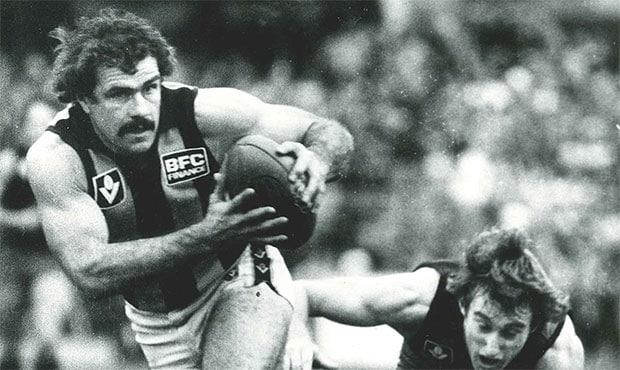
CHRIS LANGFORD
No. 24
Position: Interchange
Career: 1983-97
Games: 303. Goals: 33
Captain: 1994
Premierships: 1986, 88, 89, 91. Night premierships: 1986, 88, 91, 92. Finals appearances: 25.
Awards: 15-time interstate representative; 1987, 88, 89, 94 All Australian.
A champion full-back whose consistency and strength were typical of Hawthorn during this era. He missed the 1984 Grand Final after being dropped at the last minute and didn’t get a taste of premiership victory until 1986. One of the few modern-era players who could combine an off-field career with football at the elite level and still play well. In 1996 he informed the club that it was doubtful he would continue after taking up a position in Sydney, however the club retained him and when to extreme lengths to make the situation workable. Langford was allowed to train in Sydney on his own or with the North Shore Football Club, and the club even accepted him missing a game mid-1996 for business reasons.
In the last game of 1996 Langford showed his passion for the club by removing his jumper and waving it in the air following the Hawks’ one-point win over Melbourne in the year of the failed merger. He fiercely opposed the merger, describing it as ‘sacrilegious’ and ‘totally disrespectful’.
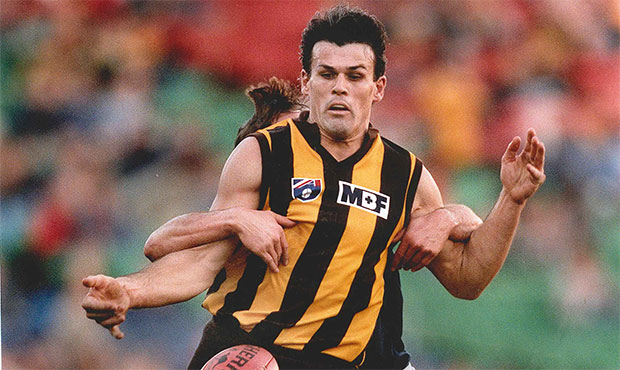
IAN LAW
No. 7
Position: Interchange
Career: 1960-68
Games: 109. Goals: 115
Finals appearances: 5.
Awards: Six-time interstate representative; 1961, 63, 64 Club Champion.
A rover recruited by Hawthorn from Old Scotch, Law was fast and clever and had the ability to kick with either foot. He also played cricket at state level. He made 1961 his own, winning the club best and fairest, running third in the Brownlow Medal and playing in Hawthorn’s first premiership. His career began to wind up in 1966 when he spent the year overseas, only to suffer a debilitating ankle injury upon his return in 1967.
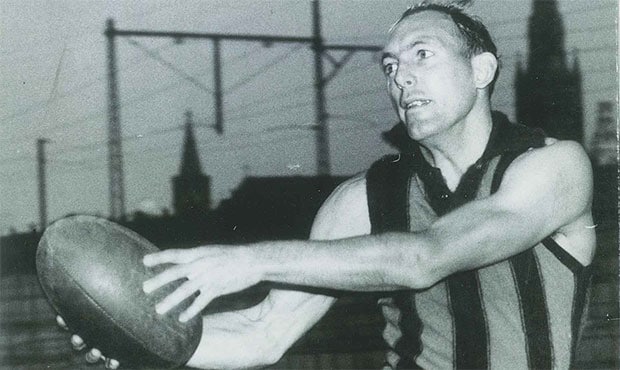
PAUL SALMON
No. 4
Position: Interchange
Career: 1996-00
Games: 100. Goals: 41
Night premierships: 1999. Finals appearances: 3.
Awards: 1997 All Australian; 1996, 97 Club Champion, 1999 Michael Tuck Medal.
Standing an immense 205cm, Salmon was one of the tallest players in League history. He began his career at Essendon, where he made his name as a full-forward where his superior height helped him kick a multitude of goals. He moved to Hawthorn in 1996 where he took over the key rucking position, a dream he had long held. He won the Club Champion award in his first two years at the club and in 1997 also won All-Australian selection. In his final year with the Hawks he passed the 300-game milestone, a true legend of the game.
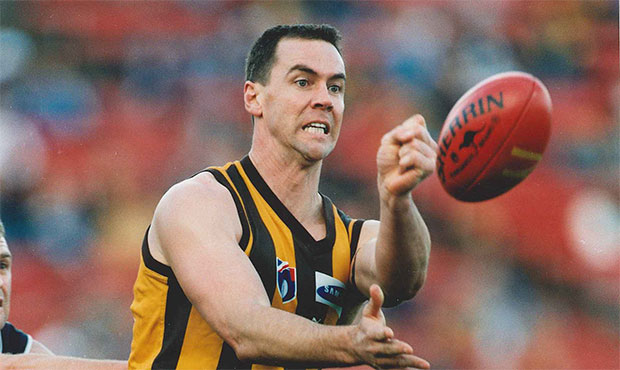
ROY SIMMONDS
No. 27
Position: Interchange
Career: 1950-61
Games: 192. Goals: 78
Finals appearances: 2.
Awards: Four-time interstate representative; 1956 Club Champion.
A rugged half-back who was also renowned around Glenferrie for his talent on the banjo. Strong, versatile and courageous, he could hold down a position as a centreman, rover or back pocket. His inspiring dashes from the back line could change a game, and although not always an accurate kick he showed no fear. Sadly he just missed a place in the 1961 premiership side.
